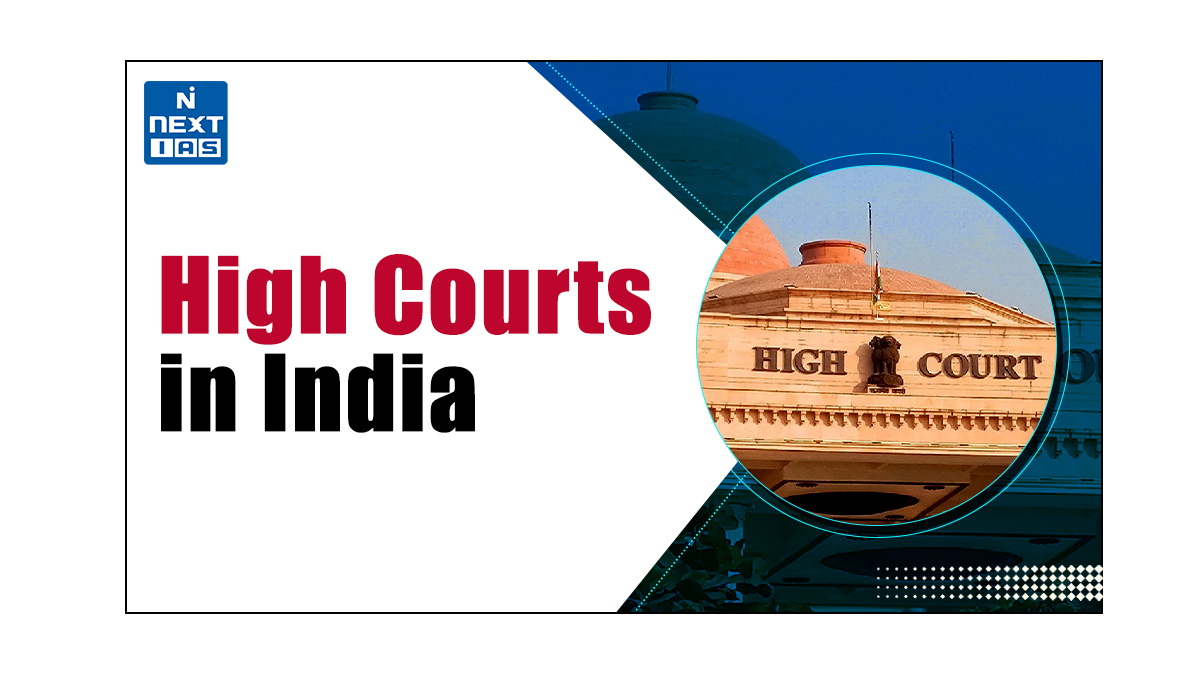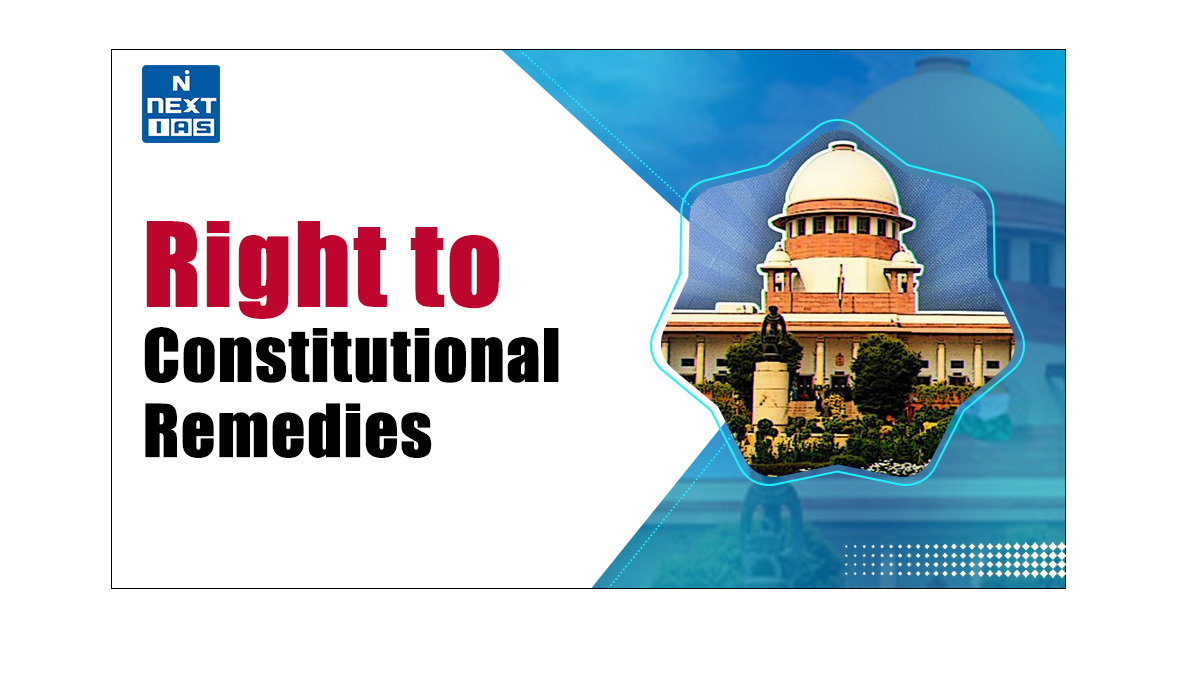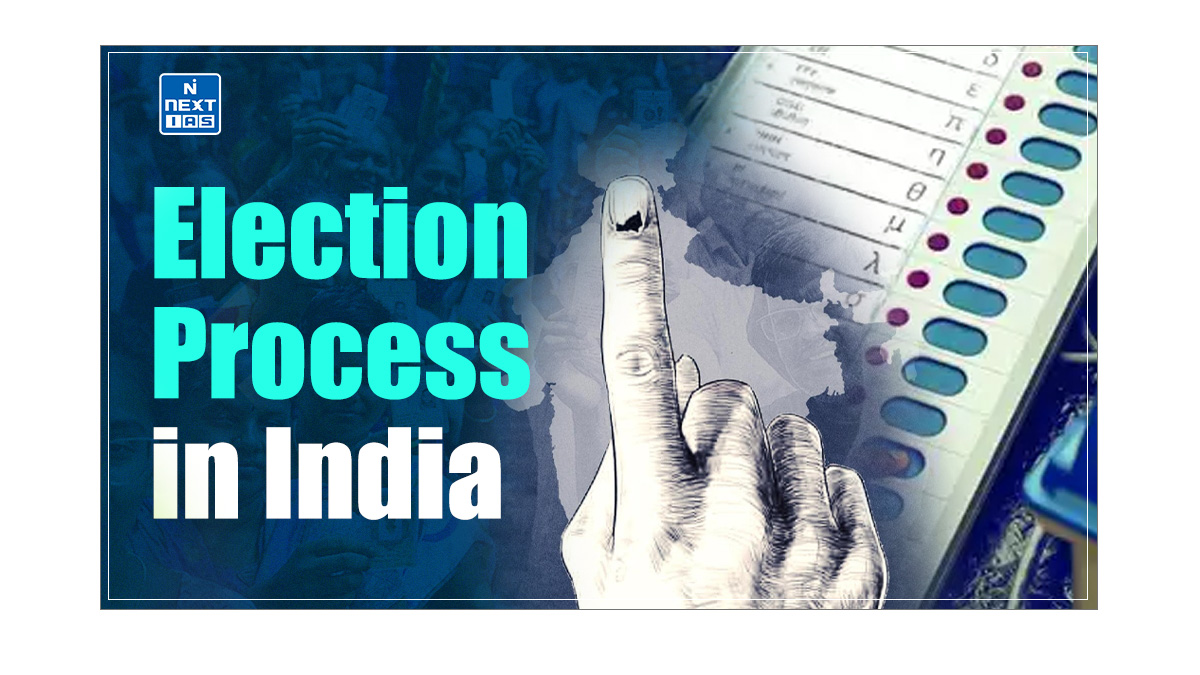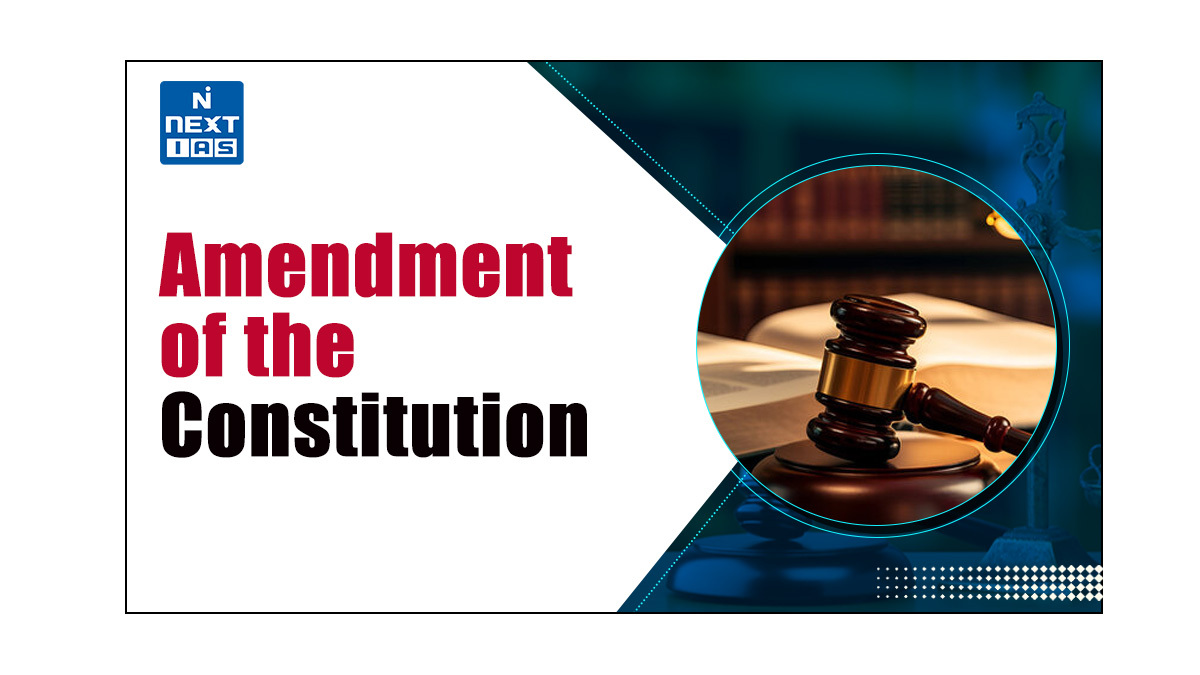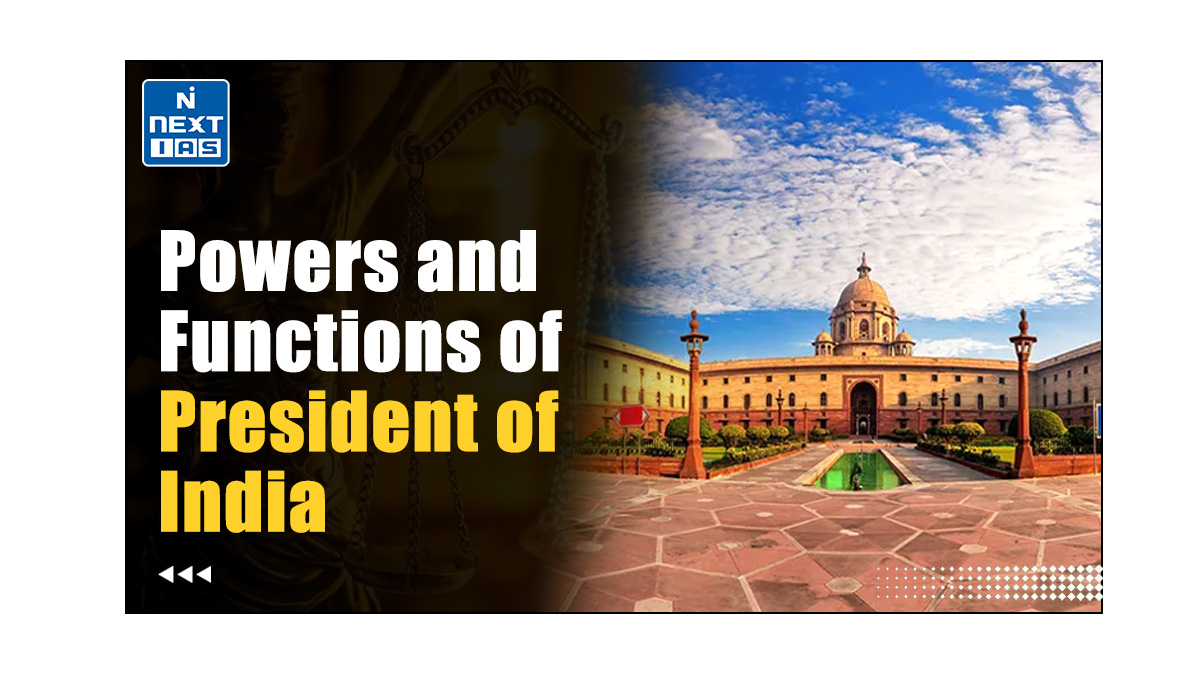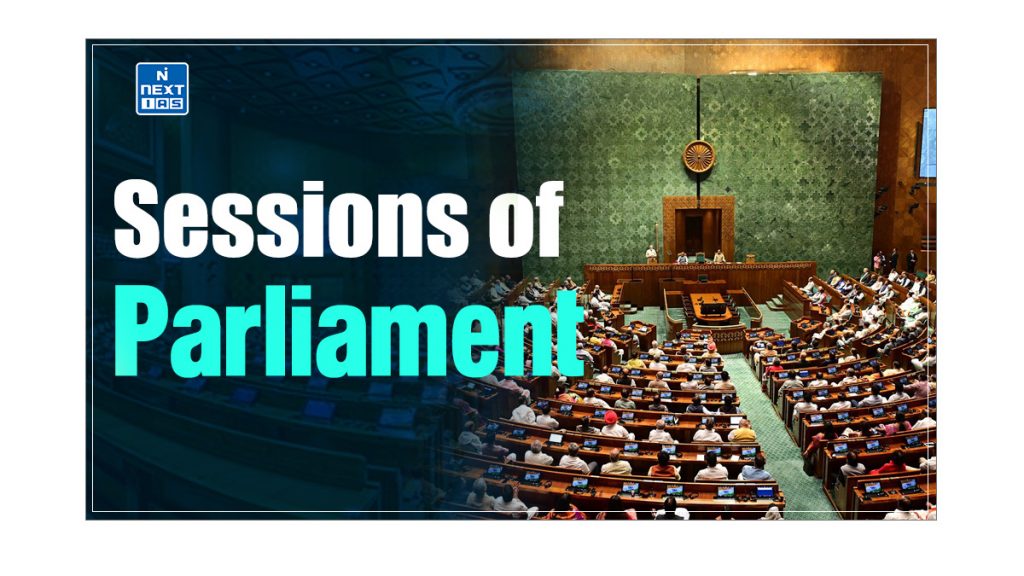
The Sessions of Parliament lie at the very core of the functioning of the Indian Parliament. They help organize and manage the multitude of tasks that the Parliament has to perform as the supreme legislative body of the country. This article of NEXT IAS aims to study in detail the Sessions of Parliament, their meaning, types, and related procedures, including summoning, prorogation, adjournment, quorum, voting, and other related concepts.
Meaning of Session of Parliament
A ‘Session of Parliament’ is the period during which the houses of the Parliament convene to conduct parliamentary businesses. In other words, a session represents the active period when the legislature is in operation, carrying out its functions.
Meaning of Session of Indian Parliament
- A “Session of Indian Parliament” refers to a period during which both Houses of the Indian Parliament (the Lok Sabha and the Rajya Sabha) meet to conduct parliamentary businesses.
- These sessions of the Indian Parliament provide a platform for the elected representatives to debate, discuss, and enact laws that shape the country’s governance and development.
| Note: The sessions of the Indian Parliament are governed by the Indian Constitution and the Rules of Procedure and Conduct of Business in Lok Sabha and Rajya Sabha. |
Types of Sessions of Indian Parliament
There is no fixed Parliamentary Calendar in India. Article 85 of the Constitution only stipulates that:
- The President shall from time to time summon each House of the Parliament to meet at such time and place as he thinks fit.
- The maximum gap between two sessions of Parliament cannot be more than six months.
- Thus, the Parliament should meet at least twice a year.
- The President may from time to time prorogue the Houses or either House and dissolve the House of the People i.e. the Lok Sabh.
By Convention, there are, usually, three sessions of the Indian Parliament in a year – Budget Session, Monsoon Session, and Winter Session.
Budget Session
- The Budget Session is the longest and most important session of the Parliament.
- The primary focus of the Budget Session is the presentation, discussion, and passing of the Union Budget, which outlines the government’s revenue and expenditure plans for the upcoming fiscal year.
- However, other legislative business and debates also take place during this session.
- The Budget Session is generally held from February to May.
Monsoon Session
- The name “Monsoon Session” derives from the fact that it coincides with the Monsoon Season (Seasonal Rains) in India.
- The primary focus of the “Monsoon Session” is to conduct legislative business, including the passage of bills, discussions on important national issues, and scrutiny of government policies.
- The Monsoon Session is generally held from July to September.
Winter Session
- Similar to the Monsoon Session, the primary objective of the Winter Session is to transact legislative business and prioritize urgent matters and bills.
- The Winter Session is generally held from November to December.
Special Sessions of Indian Parliament
In addition to the three regular sessions, the President of India can summon Special Sessions of Parliament, if necessary. These special sessions are typically called to address urgent or extraordinary matters that require the attention of the legislature.
Components of Sessions of Indian Parliament
Various components of a session of Indian Parliament can be seen as follows.
Meetings
- A session of Parliament consists of many meetings, usually, each lasting for a day.
- A session can be defined in terms of a meeting as a broader timeframe, encompassing all the meetings held during a specific period.
Sittings
Each meeting of a day consists of 2 sittings:
- Morning Sitting: It is held from 11 AM to 1 PM, and
- Post-Lunch Sitting: It is held from 2 PM to 6 PM.
Procedures Used During Sessions of Parliament
From beginning to end, various procedures are employed during the sessions of Parliament. These procedures help conduct the sessions in a planned and smooth way.
The procedures employed during sessions of Parliament are discussed in detail in the sections that follow.
Summoning
- The summoning of Parliament in India refers to the formal process of calling all members of both houses, the Lok Sabha and the Rajya Sabha, to meet for a session.
- The power to summon Parliament rests with the President of India. However, he has to do this based on the recommendation of the Cabinet Committee on Parliamentary Affairs.
- The Cabinet Committee on Parliamentary Affairs decides on the timing and duration of sessions based on the legislative agenda.
- Once the final decision is taken by the Committee, the President of India issues the official summon, calling the Members of Parliament (MPs) to assemble for the Parliamentary Session.
- During a session, the House meets every day to transact business.
- As per the Constitutional provision, the maximum gap between two sessions of Parliament cannot be more than six months.
- In other words, the Parliament should meet at least twice a year.
Adjournment
The term “Adjournment” means to suspend the work in a sitting for a specified time, which may be hours, days or weeks.
Adjournment Sine Die
- The term “Adjournment Sine Die” means terminating a sitting of Parliament for an indefinite period.
- In other words, when the House is adjourned without naming a day for reassembly, it is called Adjournment Sine Die.
| – The power of Adjournment as well as Adjournment Sine Die lies with the Presiding Officer of the House i.e. Speaker or Chairman. – The Presiding Officer can also call a sitting of the House before the date or time to which it has been adjourned or at any time after the House has been Adjourned Sine Die. |
Prorogation
- The term “Prorogation” refers to the formal ending of a session of either House of Parliament (Lok Sabha or Rajya Sabha) by the President of India.
- Thus, a ‘session’ of Parliament can be defined as the period spanning between the first sitting of a House and its prorogation (or dissolution in the case of the Lok Sabha).
- The Presiding Officer (Speaker or Chairman) declares the House Adjourned Sine Die when the business of a session is completed.
- Thereafter, the President issues a notification for Prorogation of the session within the next few days.
- However, the President can also prorogue the House while in session.
Difference between Adjournment and Prorogation
The specific differences between Adjournment and Prorogation can be seen in the following table:
| Adjournment | Prorogation |
|---|---|
| It only terminates a sitting and not a session of the House. | It not only terminates a sitting but also a session of the House. |
| It is done by the Presiding Officer of the House. | It is done by the President of India. |
| It does not affect the bills or any other business pending before the House and the same can be resumed when the House meets again. | It also does not affect the bills or any other business pending before the House. However, all pending notices (other than those for introducing bills) lapse on prorogation and fresh notices have to be given for the next session. |
Recess
- The period spanning between the prorogation of a House and its reassembly in a new session is called ‘recess’.
- This is, basically, the time gap between the two consecutive sessions.
Dissolution
- The term “Dissolution” refers to the formal termination of the Lower House of the Parliament, i.e. Lok Sabha.
- A Dissolution ends the very life of the existing House, and a new House is constituted after general elections are held.
- It is to be noted that the Rajya Sabha, being a permanent House, is not subject to dissolution.
- Thus, only the Lok Sabha is subject to dissolution.
- The dissolution of the Lok Sabha may take place in either of two ways:
- Automatic Dissolution – It occurs on the expiry of its tenure of five years or the terms as extended during a National Emergency.
- Dissolution by President – The President of India is authorised to dissolve the House even before the completion of its normal tenure.
- Once the President decides to dissolve the Lok Sabha, the dissolution is irrevocable.
Rules Regarding Lapsing of Bills Upon Dissolution of Lok Sabha
- When the Lok Sabha is dissolved, most of the bills and all other business including, motions, resolutions, notices, petitions and so on pending before it or its committees lapse.
- In order to be pursued, they must be reintroduced in the newly constituted Lok Sabha.
- However, some pending bills and all pending assurances that are to be examined by the Committee on Government Assurances do NOT lapse on the dissolution of the Lok Sabha.
- The position with respect to the lapsing of bills is as follows:
| Bills that Lapse | Bills that Don’t Lapse |
|---|---|
| – A bill pending in the Lok Sabha, whether originating in the Lok Sabha or transmitted to it by the Rajya Sabha. – A bill passed by the Lok Sabha, but pending in the Rajya Sabha. | – A bill not passed by the two Houses due to disagreement and for which the President has notified the holding of a joint sitting before the dissolution of Lok Sabha. – A bill is pending in the Rajya Sabha but not passed by the Lok Sabha. – A bill passed by both Houses but pending assent of the President. – A bill passed by both Houses but returned by the President for reconsideration of Houses. |
Quorum
- The term ‘Quorum’ refers to the minimum number of members required to be present in the House before it can transact any business.
- It is 1/10th of the total number of members in each House (Lok Sabha and Rajya Sabha) including the Presiding Officer of the House.
- Thus, the Quorum for each House of the Parliament can be seen as follows:
- For the Lok Sabha, Quorum = 545/10 = 54.5 ≡ 55
a. Thus, at least 55 members must be present in the Lok Sabha for it to be able to transact any business. - For the Rajya Sabha, Quorum = 250/10 = 25
a. Thus, at least 25 members must be present in the Rajya Sabha for it to be able to transact any business.
- For the Lok Sabha, Quorum = 545/10 = 54.5 ≡ 55
- Thus, the Quorum for each House of the Parliament can be seen as follows:
- If there is no Quorum during a meeting of the House, it is the duty of the Presiding Officer either to adjourn the House or to suspend the meeting until there is a Quorum in the House.
Voting in House
- Any matter at any sitting of either House or joint sitting of both the Houses of Parliament is decided by a specific type of majority of votes as per the nature of the matter.
- The following points are to be noted w.r.t. voting during a parliamentary procedure:
- The Presiding Officer of a House does not vote in the first instance but exercises a casting vote in the case of an equality of votes.
- The proceedings of a House are to be valid irrespective of any unauthorised voting or participation or any vacancy in its membership.
Methods of Voting
The various methods adopted for voting in the Lok Sabha are explained below:
Voice Vote
- In the Voice Vote method, the members who are in favour of the motion being voted upon say ‘Aye’ and those against the motion say ‘No’.
- The presiding officer listens to the volume of the voices voting “Aye” and “No” and makes a determination based on which side is louder.
- Thus, this decision is subjective and relies on the officer’s judgment.
Division
Under the Division method of voting, votes are recorded by either of the following three methods:
- By operating the Automatic Vote Recording Equipment,
- By distributing ‘Ayes’ and ‘Noes’ slips in the House,
- By members going into the Lobbies.
Secret Ballot
- The Secret Ballot method of voting is used during certain key procedures to ensure the confidentiality of each member’s vote.
- As opposed to Open Voting, where the individual votes can be seen by all the members, Secret Ballot voting ensures that the individual votes don’t get revealed to any other member.
- In an Open Voting, the individual results are shown in 3 colours: Green for ‘Ayes’, Red for ‘Noes’ and Yellow for ‘Abstain’ on the Individual Result Display Panel.
- In Secret Ballot Voting, on the other hand, the Individual Result Display Panel flashes only a white light to show that the vote has been recorded.
Recording of Votes by Distribution of Slips
Members are given two slips: ‘Aye’ and ‘No’. Members choose either of the two slips as per their decision. These slips are, then, collected and total ‘Ayes’ and total ‘Noes’ are counted.
Physical Count of Members in their Places Instead of a Formal Division
- If in the opinion of the Speaker, a Division is unnecessarily claimed, he/she may ask the members who are for ‘Ayes’ and those for ‘Noes’, respectively, to rise in their places and on a count being takes, he/she may declare the determination of the House.
- In such a case, the particulars of the voting of the members are not recorded.
Casting Vote
- If in a Division, the number of ‘Ayes’ and ‘Noes’ is equal, the question is decided by the casting vote of the Speaker.
- As per the Constitutional provisions, the Presiding Officer of the House cannot vote in the first instance. He/she has only a casting vote which he/she must exercise in the case of equality of votes.
Lame-duck Session
- Lame-duck Session refers to the last session of the preceding Lok Sabha after a new Lok Sabha has been elected.
- Those members of the preceding Lok Sabha who could not get re-elected to the new Lok Sabha are called lame-ducks.
Language in Parliament
- The Indian Constitution has declared Hindi and English to be the languages for transacting business in the Parliament.
- Though English was to be discontinued as a floor language the expiration of fifteen years from the commencement of the Constitution (that is, in 1965), but the Official Languages Act of 1963 allowed English to be continued along with Hindi.
- It is to be noted that the Presiding Officer can permit a Member of Parliament to address the House in his/her mother tongue, which can be other than Hindi or English.
Conclusion
The Session of Parliament is a critical component of the country’s democratic governance. It provides a platform for elected representatives to debate, discuss, and enact laws that shape the nation’s development and address the concerns of its citizens. They are the primary vehicles, which enable the smooth and effective functioning of the Parliament, thus helping the country’s democratic progress and the realization of its developmental aspirations.
Frequently Asked Questions (FAQs)
Who presides over the Joint Session of the Parliament?
The President of India presides over the Joint Session of the Parliament.
In India’s Parliament, how many sessions are there?
There are a total of 3 sessions in the Indian Parliament.
Is it mandatory to conduct all three sessions of Parliament?
The Constitution of India provides for three sessions of the Parliament in a year, but it is not mandatory to conduct all three sessions. Also, there is no minimum number of days that the Parliament is required to meet in a year.
Which is the longest session of the Parliament?
The Budget Session is the longest session of the Parliament.
